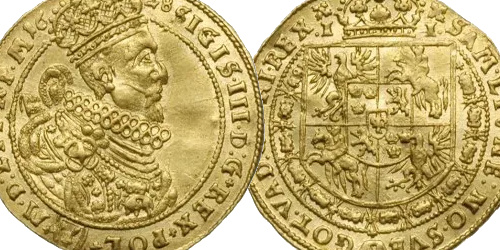Gil de Siloé
Antwerp 1440 - 1501 Burgos
And workshop
Seated Madonna, Sedes Sapientiae
Enthroned on Solomon's throne of wisdom
Around 1485/90
Alabaster, sculpturally carved, remains of the original polychromy
Museum sculpture by the most important sculptor of his time
A masterpiece of late Gothic sculpture in Spain
Height 35 cm, width 23 cm, depth 12 cm
Highly museal sculpture of a seated Madonna, carved from alabaster, its style and execution can be attributed to the Flemish sculptor Gil de Siloé (1440s-1501, the leading and most important Spanish sculptor around 1500 who worked in Burgos.
De Siloé's origins are not entirely clear; he came from either Orléans or Antwerp, and his works have both French and Flemish characteristics. The sculptor was commissioned by Queen Isabella of Portugal to execute numerous sculptural projects in both wood and stone, including the royal tombs. He designed the sculptural decoration in Burgos Cathedral; of particular note is the double tomb in alabaster for Juan II and Isabella of Portugal in Caruja de Miraflores, completed in 1493, which is known as one of the richest tombs in Spain and whose funerary sculptures are stylistically related to this Madonna.
Mary is shown seated on a throne bench with a prominent base plate, as can also be seen in the funerary sculptures. These figures are shown in a similar type, namely representative-seated and holding attributes. It is not the throne that is the focal point, but the broadly extending seated posture of the Virgin with her arms open in a semicircle, with her right hand holding the naked Child Jesus against her. The cloak falls harmoniously over her shoulders and glides over her lap, where the heavy folds fall to the floor in creases and corner configurations in a typical V-scheme. The drapery is rendered in a play of naturalism and stylisation, characterised on the one hand by the thin undergarment, which emphasises the figure's narrow waist gathered with cord by her posture; tight-fitting, it falls over her stomach into her lap. On the other hand, the luxurious brocade-like cape emphasises the figure's volume. The enthroned Hope (Esperanza) and Maria lactans of the tomb show strong compositional similarities, also in the folded panels hitting the ground.
If we look at the details of the surface decorations, we find them on the hem of the décolleté as well as on the rich crown, which here probably simulates a metal ring set with precious stones. Mary's typically Gothic hair falls in long wavy strands over her chest, while the child's curls spread out from the calotte in a volute-like curl behind a distinguished high forehead. The elongated mannerist-thin fingers of both sculptures are also typical Gothic features. De Siloé's figures also show concisely elaborated, heavy eyelids. The less rich folding of the aforementioned comparative examples can probably be explained by the larger context of the works as well as the intended uniformity or the collaboration of different sculptors of the workshop. Particularly outstanding in this figure are the unfolded triangular hems and the fold around the lap, which in their idealised disorder testify to a naturalistically well thought-out calculation.
These compositional and stylistic features also apply to the enthroned Madonna from the Cleveland Museum of Art, which is also attributed to the workshop of De Siloé and is dated around 1480. Both the profile of the seat (without accessories) and the compositional posture are very similar to this Madonna. Nevertheless, the latter is depicted less floating and more connected to the human sphere, as the child leans back playfully and does not balance on a fragile bowl fold like the child of the Cleveland Madonna. In addition, the figure is more richly decorated overall, both in the more animated drapery and, for example, in the snail-shaped curls of the Child Jesus. Traces of gilding and the bole survive on both figures and bear witness to the originally rich decoration. The fact that these remains of mounts are present reflects the great age and authenticity of the figure. Although the naturalistically depicted facial features and gestures are close to reality, the sculptural elaboration is primarily representative-idealising in its function. It is probably a private devotional work in its own right, probably commissioned by a noble patron. This can be reconciled particularly well with its smaller size; the sculpture was placed slightly elevated, as Mary's gaze is lowered downwards, while the child is rapt and looks sideways upwards. This fits well with Mary's role as intercessor between her son and the faithful, as well as with the increasingly popular veneration of Mary in late medieval Europe.
Literature: Gil de Siloe and his School, Harvard University 1936.
Making of "Hispano-Flemish" style in fifteenth-century Castile, Harvey Miller 2015
Cut in Alabaster, Harvey Miller 2018.
Siloe, Gil de. In: Hans Vollmer (ed.): Allgemeines Lexikon der Bildenden Künstler von der Antike bis zur Gegenwart.
Founded by Ulrich Thieme and Felix Becker. Volume 31: Siemering-Stephens. E. A. Seemann, Leipzig 1937, p. 27.
最近瀏覽過的
登錄以查看拍品列表
收藏
登錄以查看拍品列表




















